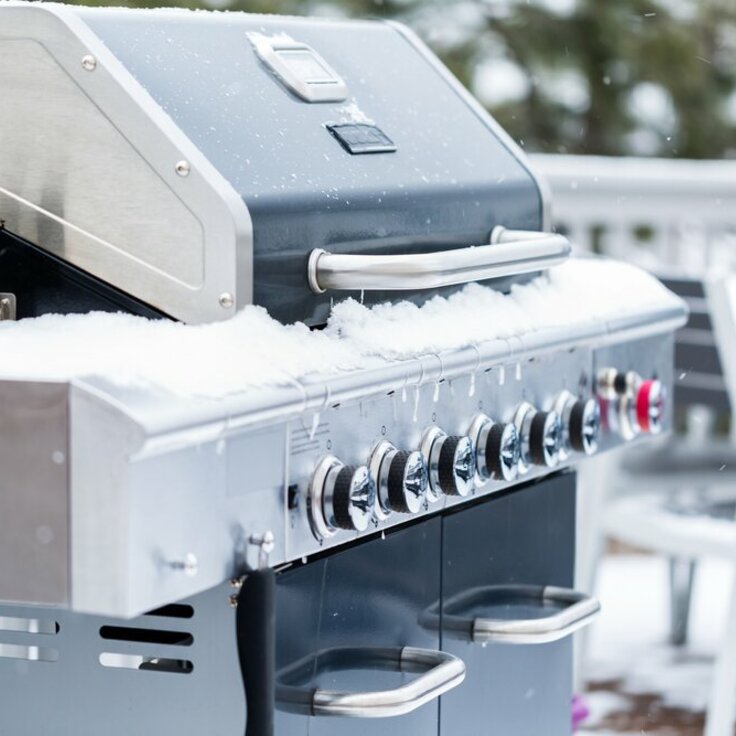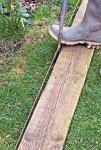Renovating your Lawn – How, Why & When Is Best?
What is a Lawn Renovation?
Sometimes your lawn can become patchy, mossy or even boggy. A full renovation will help to bring your grass back to life, giving you a thick, green, lush lawn.
This involves various activities aimed at restoring or upgrading the grass and soil in a lawn that may have been damaged, worn out, or invaded by pests or weeds.
There are some essential tasks but others are optional. You’ll need various products during the process including feed, seed and maybe a top dressing.
If you have a small lawn, then go here to buy grass seed because you can buy it in the exact amounts measured to match your lawn size.
Note, that a renovation always makes your lawn look worse before it looks better. So do bear that in mind especially after you’ve done the scarifying.
Why do a full renovation?
Over time, lawns may suffer from compaction, thatch build-up, and other issues that can inhibit grass growth. The renovation process promotes healthier grass by improving soil structure and introducing new, resilient grass varieties.
Managing weeds is another good reason. Lawns can become susceptible to weed infestations. Renovation activities, such as overseeding and proper feeding, can help suppress weeds.
A well-renovated lawn is often more resilient to environmental stressors, such as drought or extreme temperatures. Healthy grass with a strong root system is better equipped to withstand adverse conditions.
Healthy lawns contribute to environmental well-being by preventing soil erosion, absorbing rainwater, and capturing carbon dioxide. A well-maintained lawn can also act as a natural filter for pollutants and contribute to improved air quality.
A well-kept lawn can even enhance the value of your property. Curb appeal is a significant factor in property valuation, and a lush, green lawn is often attractive to potential buyers or visitors.
Finally, a beautiful, healthy lawn can bring a sense of pride and satisfaction to homeowners. The process of planning and implementing a lawn renovation can be rewarding, and the results are often gratifying.
When to do a lawn renovation
If you’re reading this and thinking you’re keen to get out there and start your reno, hold back for a minute. There are specific times of year when it’s best to do it, for example, Summer can be tough because of drought and Winter is a no-go because it’s way too cold.
Spring or Autumn is normally best, here’s why.
Renovating in Spring or Autumn
Spring is by far the most popular time to do the renovations. That’s because it allows you to get your garden looking crisp and lush before the Summer ‘party’ months come around.
Autumn is also a great time to repair the grass after stress from the Summer heat and extensive usage.
Both Autumn and Spring provide great weather conditions for faster results. A bit of rain, some sun, and warmer temperatures.
The weather is warmer and daylight hours begin to increase making the conditions perfect for seed germination.
It also means you can recover your grass after the most stressful times of the year.
Finally, Here are the steps for a lawn renovation
Here are the steps.
- Apply soluble iron sulphate if you have moss. This will turn it black while making the grass greener.
- Scarify the lawn. Use an electric scarifier if possible as this will get deeper into the soil. Helping to remove the dead moss, thatch, and any weeds, while allowing air to get to the grass roots.
- Aerate the soil. This means putting holes in the soil using a garden fork or hollow tine aerator. It helps with drainage and airflow while reducing soil compaction.
- Apply Spring Lawn Feed. Lawn feed will help to bring the old grass back to life and give the seed some nutrients for better germination success.
- Apply grass seed at 25g per m2. When the new grass seed comes through and the feed starts to kick in, you’ll notice a huge difference in the colour, thickness and growth velocity.
- Optionally Apply a top-dressing of 70/30 sand/soil mix or peat-free lawn dressing. This helps with seed-to-soil contact and speeds up germination. It also helps improve the composition of clay-based soil.








